Welcome to your first journey into the world of animations in PowerPoint! In this tutorial, you will learn the basics of animation effects and understand how triggers, duration, and delay work. Animations can enhance your presentations and help the audience better grasp the content. However, be cautious with the use of delays as they can often lead to confusion. So, let's get started right away!
Key Takeaways
- There are four main types of animations in PowerPoint: Entrance, Emphasis, Exit, and Motion Paths.
- Triggers allow you to start animations in various ways, such as by mouse clicks or timed in relation to other animations.
- The duration of animations can be adjusted, and you have the option to set delays between animations.
Step-by-Step Guide
Let's start with the animations themselves.
Types of Animations
First, there are four different types of animations in PowerPoint that you can use. To imagine this, select a simple rectangle from your presentation sheet. You can now begin assigning animations to this object.
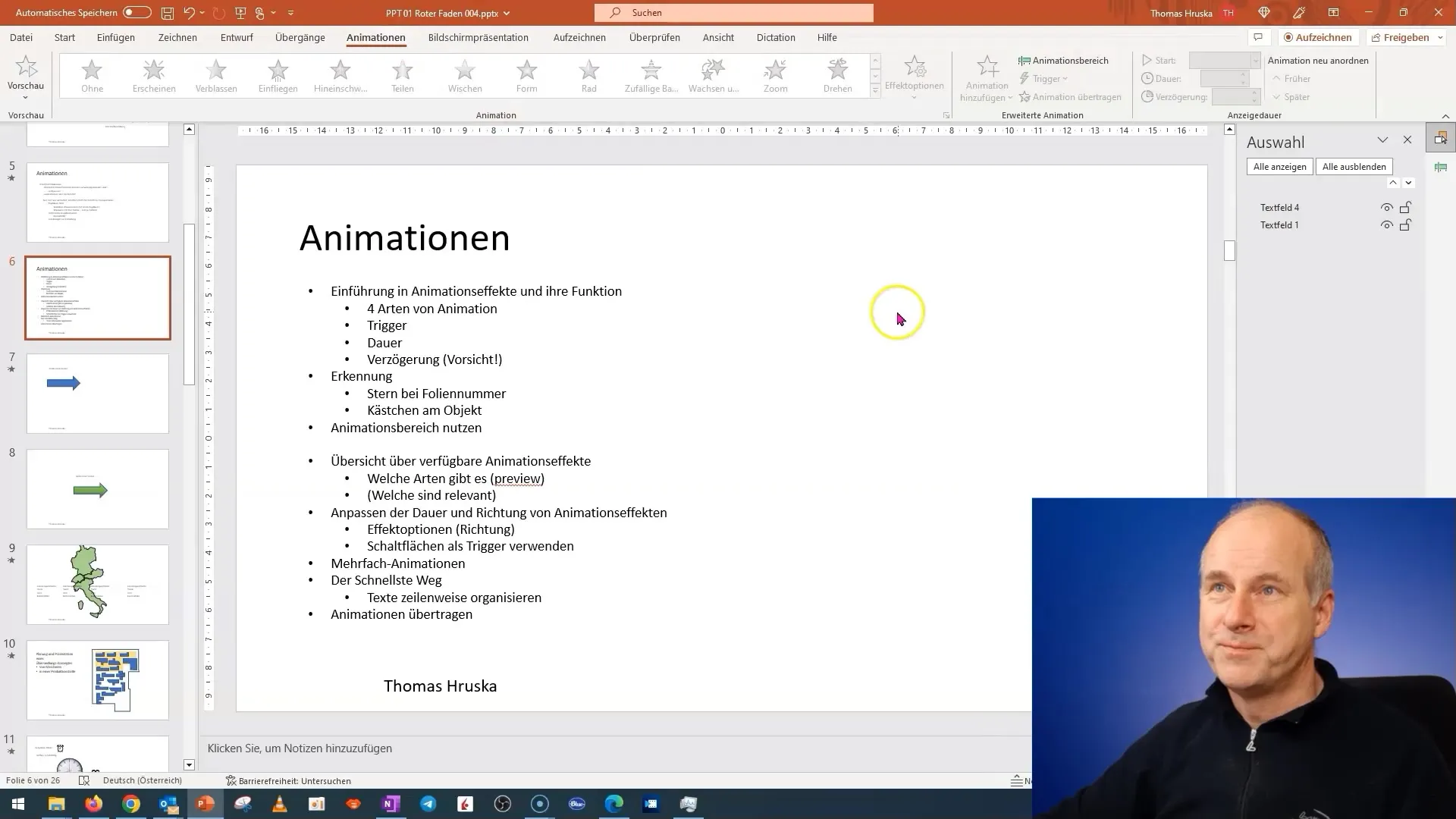
The four types of animations are:
- Entrance (green): This animation makes an object appear or pop up
- Emphasis (yellow): This animation highlights an object
- Exit Animation (red): With this animation, you make the object disappear
- Motion Paths (blue): This allows you to move the object across the screen
You can find the most common animations in the top bar. Depending on your needs, you can scroll down further to see more options or explore all available animations.
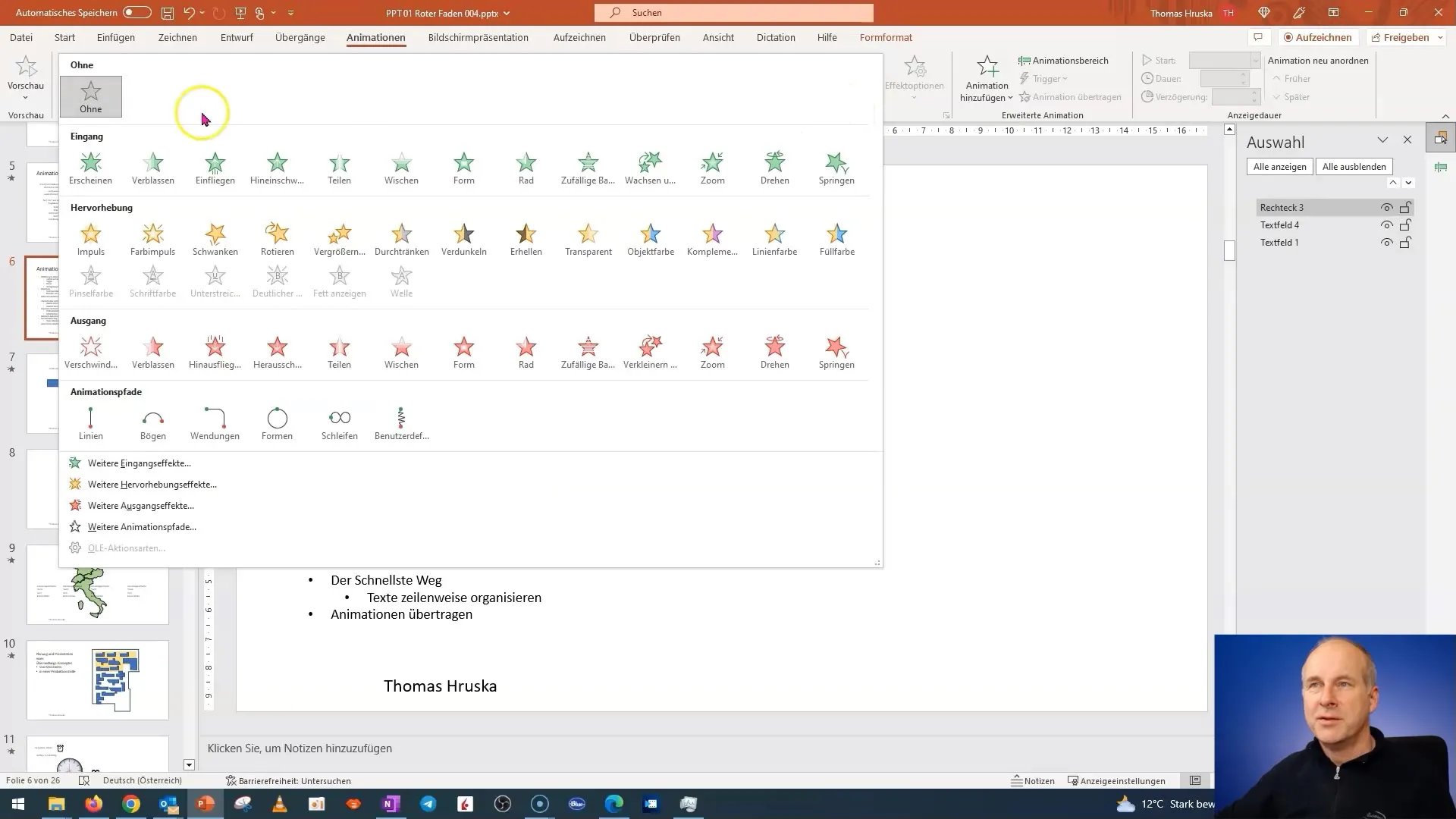
Effect Preview
A very useful feature is the Effect Preview. By clicking on the preview icon, you can immediately see how the selected effect will look in the presentation. This is particularly helpful to ensure that the animation meets your expectations before applying it.
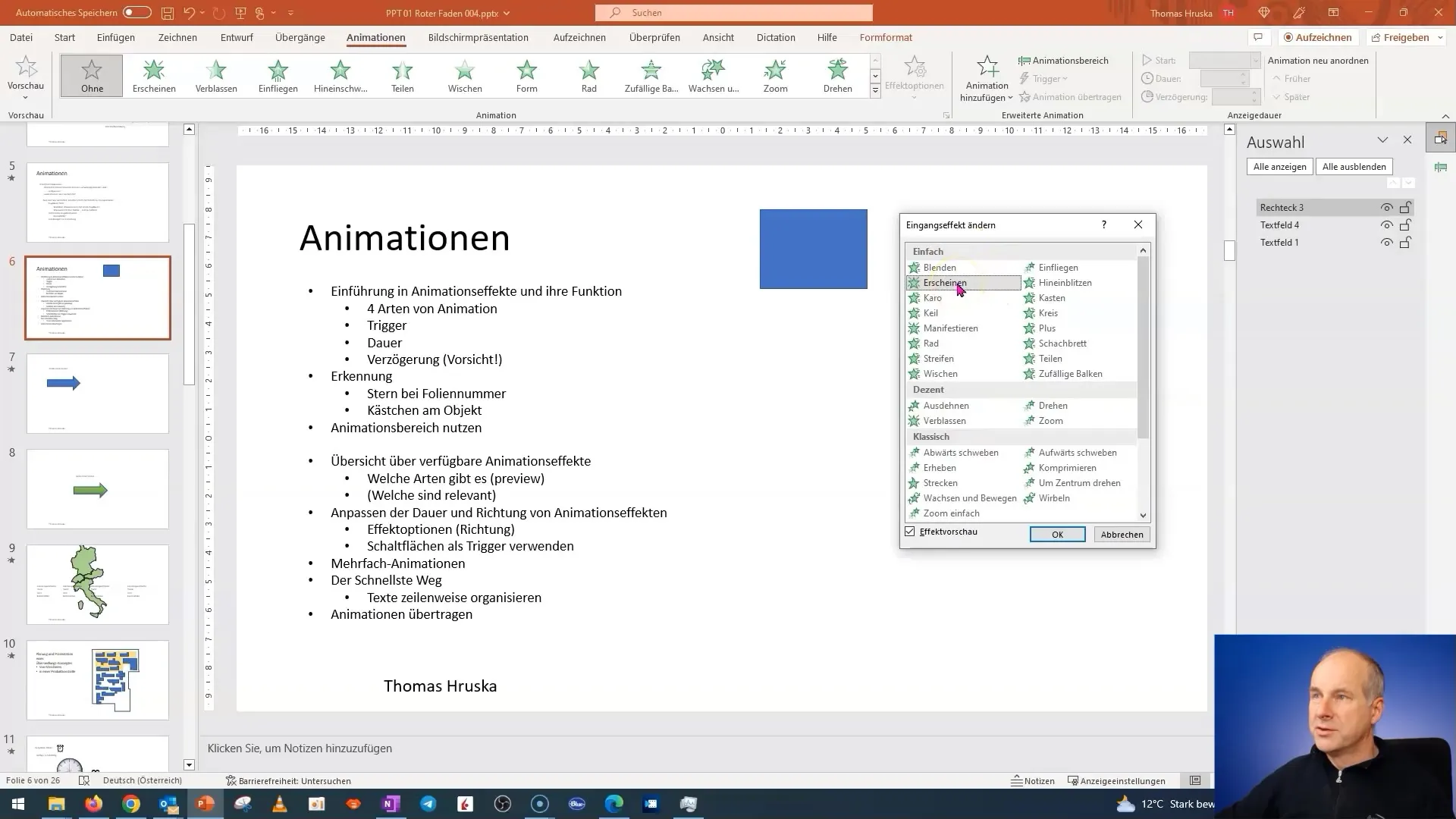
Triggers
The next step is the use of triggers. Triggers are mechanisms to start the animations. For example, you can specify that an animation starts by a mouse click or automatically after the previous animation. Choose an animation, such as Entrance, and make sure to use it as the most commonly used and professional method.
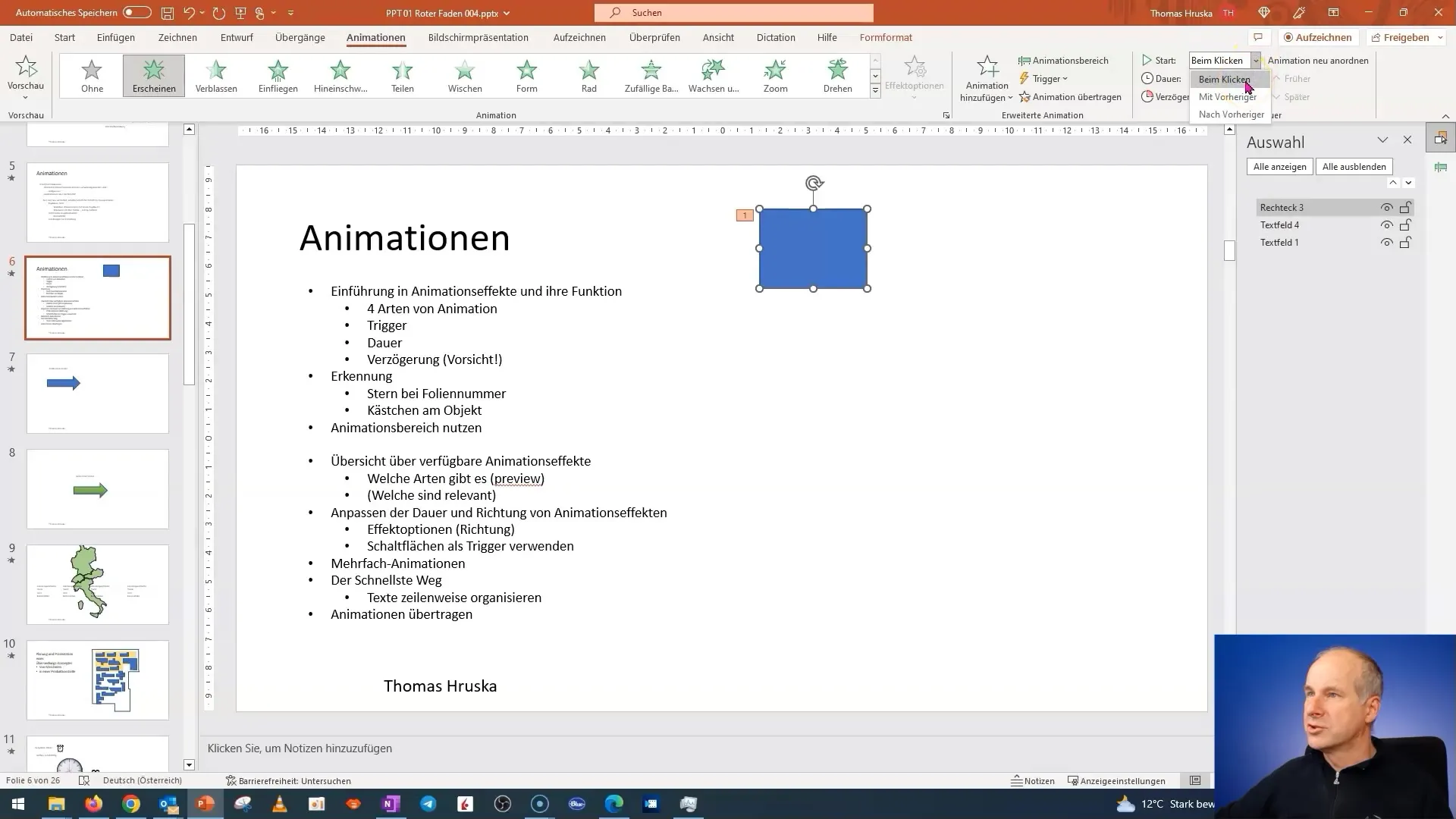
If you have an object that should use animations, select the Trigger option. Here you can specifically set whether the animation is triggered by a click or if it is executed directly after a previous animation.
Animation Duration
Now let's look at the animation duration. You can set the duration of the animation between 0.01 and five seconds. It is important to choose the duration correctly so that the animations do not appear too fast or too slow. For example, if you have an animation where an object is supposed to float in, you could set two seconds for this effect.
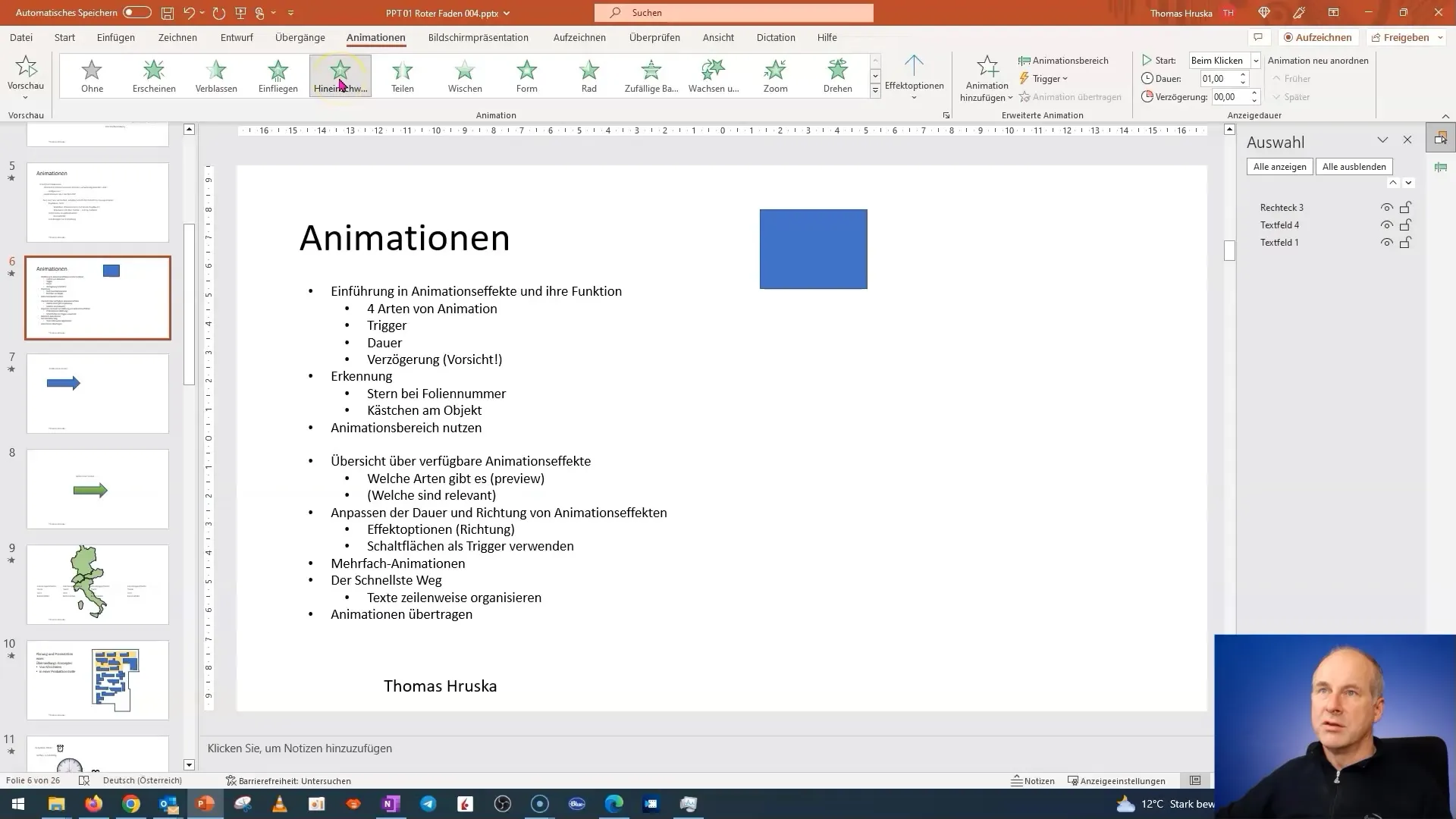
As mentioned earlier, in the animation area, you can use the preview option. This helps you identify if the settings meet your expectations. In this example, I set the duration to ten seconds so you can see the difference clearly.
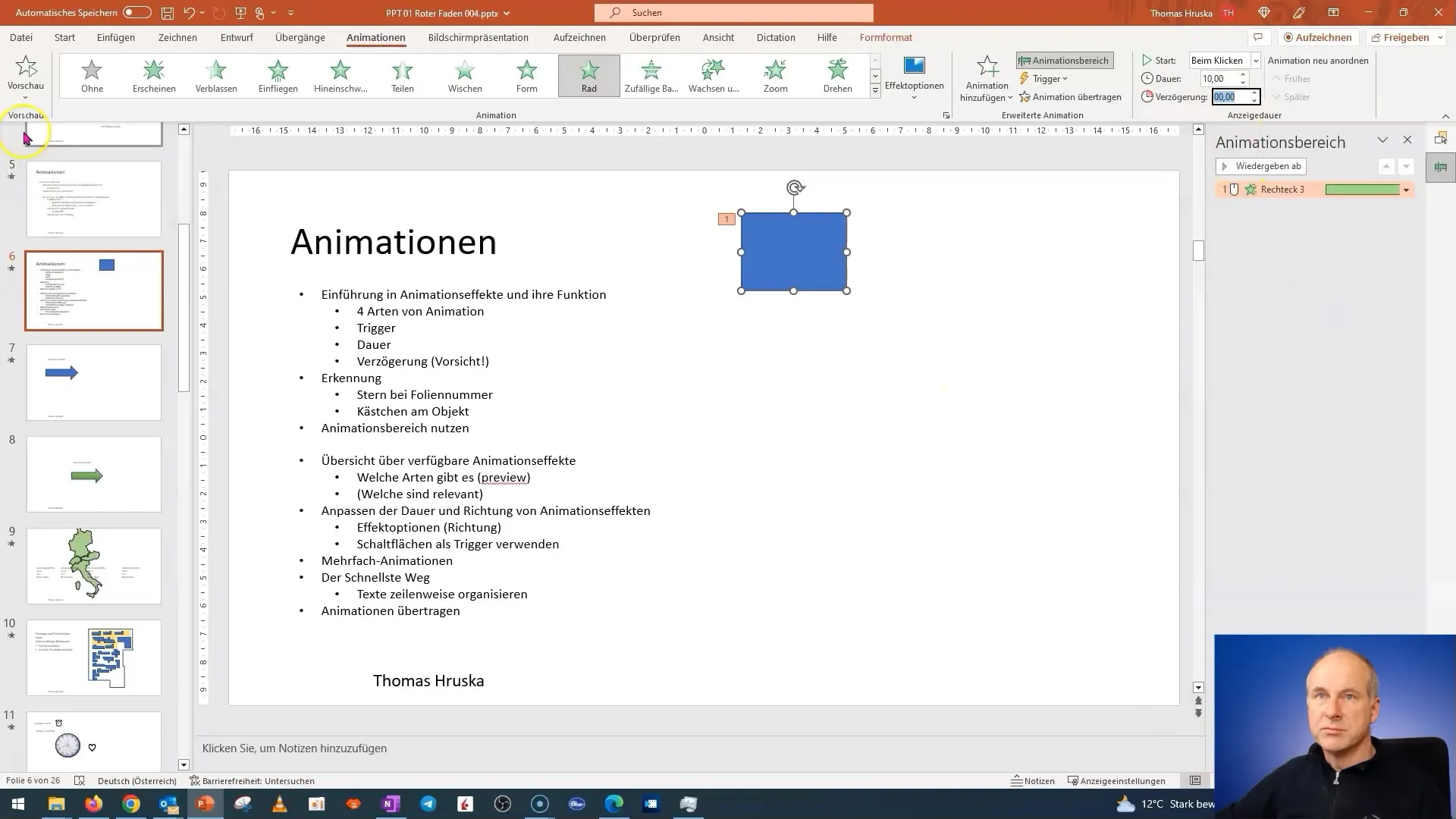
Delay
Now let's talk about delay. This is an aspect that is often not given enough attention. You can set delays between two consecutive animations so that one animation plays automatically after another. For example, choose the "After Previous" option and add half a second as a delay.
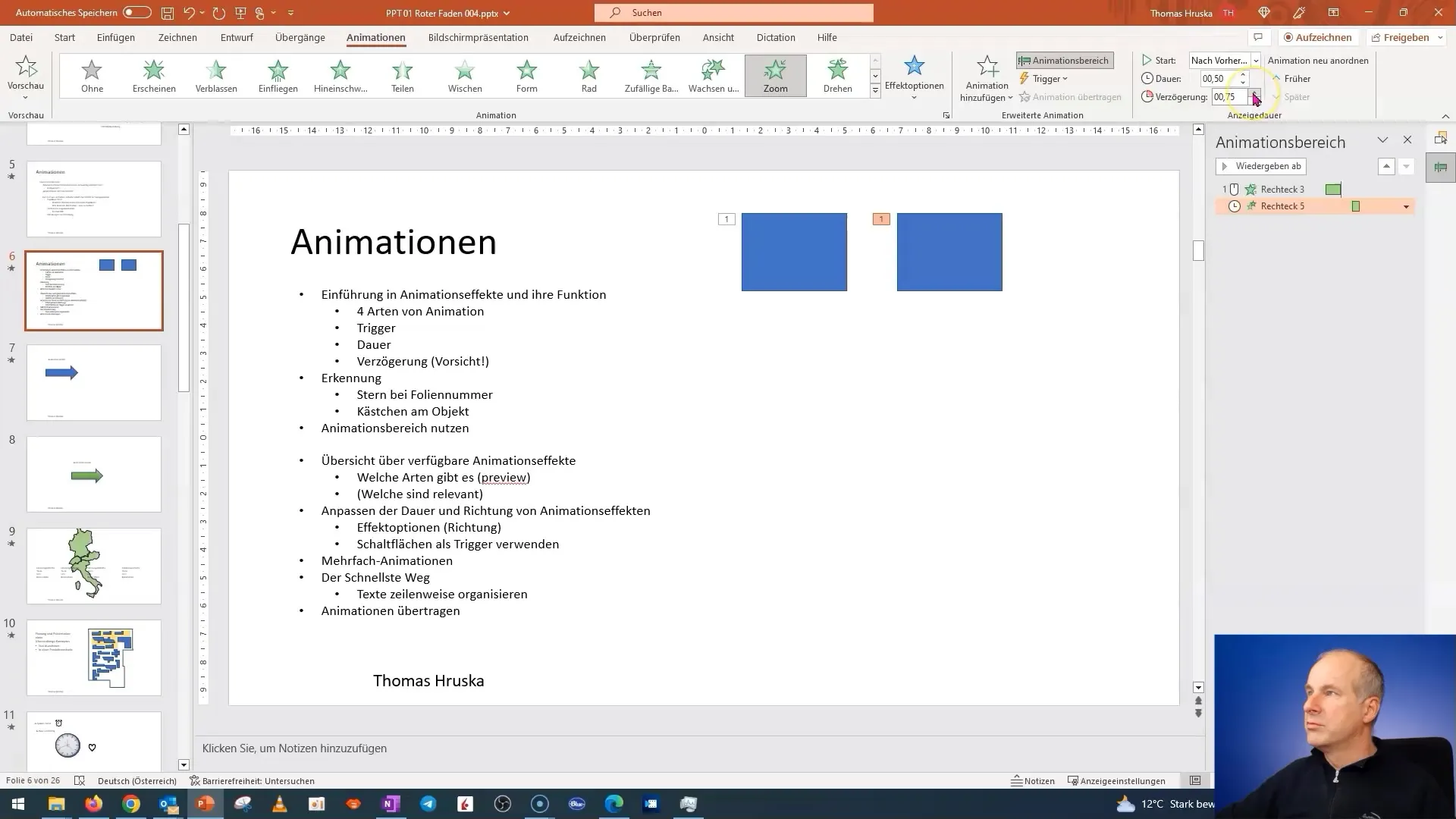
It should be noted that many users tend to unintentionally integrate delays into their presentations. Often they click, and nothing happens at first, which can lead to nervousness. Be sure to use delays sparingly and thoughtfully to avoid such situations.
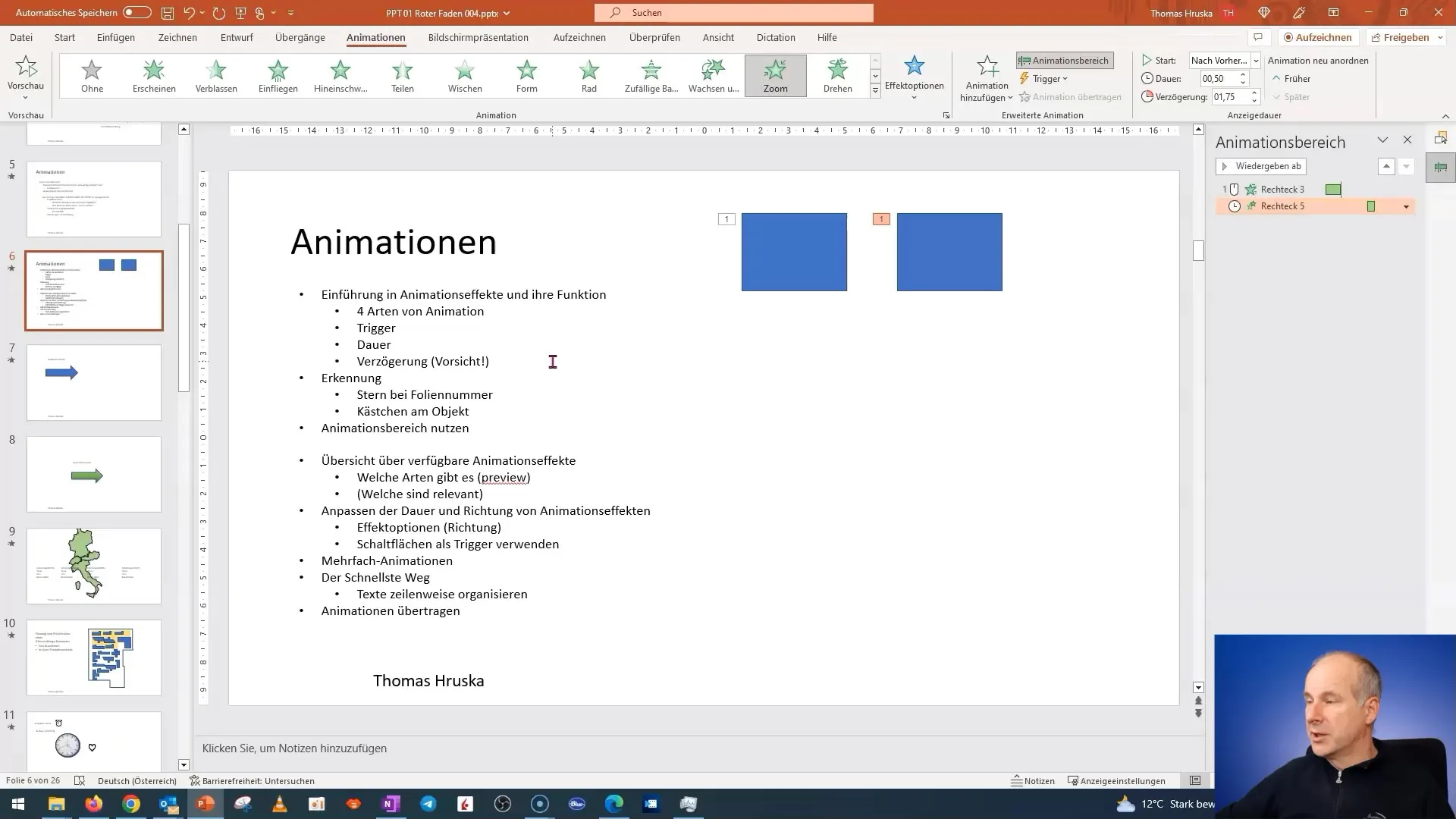
Now you have learned the basics of animations in PowerPoint. Put what you have learned into practice and experiment with different animations, triggers, durations, and delays. Always pay attention to the professionalism of your presentation.
Summary
In this guide, you have learned the key basics of animations in PowerPoint, including the different types of animations, the use of triggers, and the adjustment of duration and delays. With this knowledge, you can significantly enhance and make your presentations more effective.
Frequently Asked Questions
How many different types of animations are there in PowerPoint?There are four types of animations: Entrance, Emphasis, Exit, and Motion Paths.
What are triggers in PowerPoint?Triggers are mechanisms that allow you to start animations through actions such as mouse clicks or in conjunction with other timing animations.
How long can an animation last in PowerPoint?An animation can be set to last between 0.01 and 5 seconds.
What is the risk of delays?Delays can cause presenters to become nervous, thinking that their animations are not working. It is important to use delays more consciously.
How can I test my animations?You can use the Effect Preview to test animations and see how they appear in the presentation.


